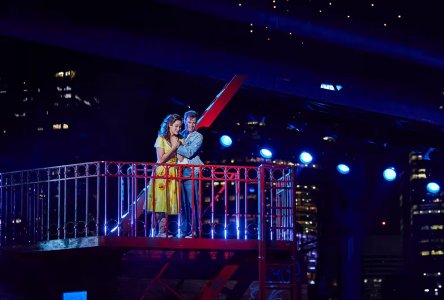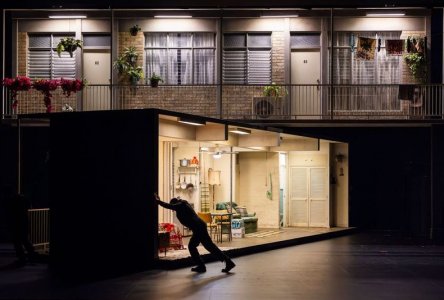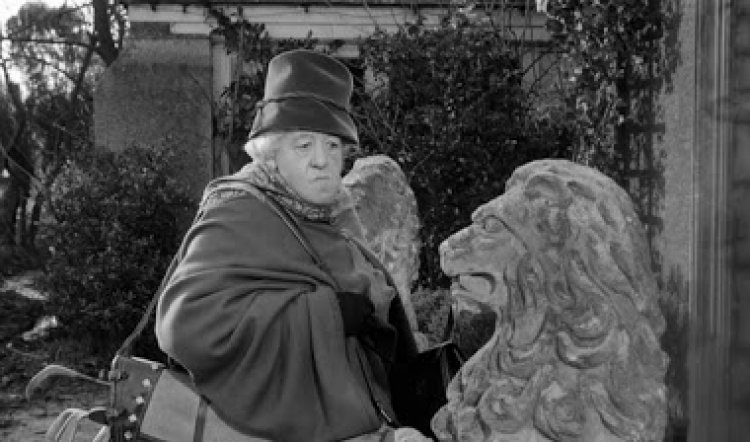
THE CASE OF THE STICKY OVERSIGHT
It would need Miss Marple (above) to work out the exact nature of the rum goings-on down at Mrs Macquarie’s Chair, but even in the current fog of obfuscation, it’s clear there’s blood on the stage. It could be called The Mystery of the Missing Ending or even, The Case of the Sticky Oversight. Either way, it’s ugly.
Let’s face it, rarely has Bizet’s Carmen been so rancorous – off-stage. The latest episode in the row is datelined 28 March 2017 and comes (in full and unedited at their request) from the principals in the crisis, uber director Gale Edwards, design maestro Brian Thomson AM and costume design maven Julie Lynch.
It reads as follows...
Carmen creatives extreme disappointed with changes to production despite OA’s claim to “stay as true to the original format as possible”.
In a press release last week we raised our concerns regarding the risk to our and the production’s artistic integrity by not being allowed to oversee the re-staging of Carmen on Sydney Harbour. In it we said, “we cannot guarantee the work’s integrity, or that the public will see the production as it was originally intended to be”. We follow that release with two main areas of concern: firstly, that the originating creators of any artistic work are best placed to guide artistic integrity in the overseeing of all creative aspects of future production revivals and should always be given “first right of refusal”; and secondly, that Opera Australia (OA) as a publicly funded company has the responsibility and obligation to support and protect the artistic and moral rights of the artists they engage, and that such protections be enshrined in contracts that are honoured.
Last Friday’s Opening Night of Carmen justified our apprehensions when various changes were made, and especially to the final scene’s staging by revival director Andy Morton and OA, drastically altering our work without our knowledge. This production is certainly not as “true to [the] original format as possible”, as the OA had rebutted and promised in last week’s press announcements, and has since been reviewed as:
...The new staging of this moment is clunky and bland, and seriously undermines the statements Edwards had made about gendered violence in this opera. Edwards’ final tableau tied the entire production together, forcing us to look at the violence committed against Carmen, and women in general, in an even more sinister and terrifying light...
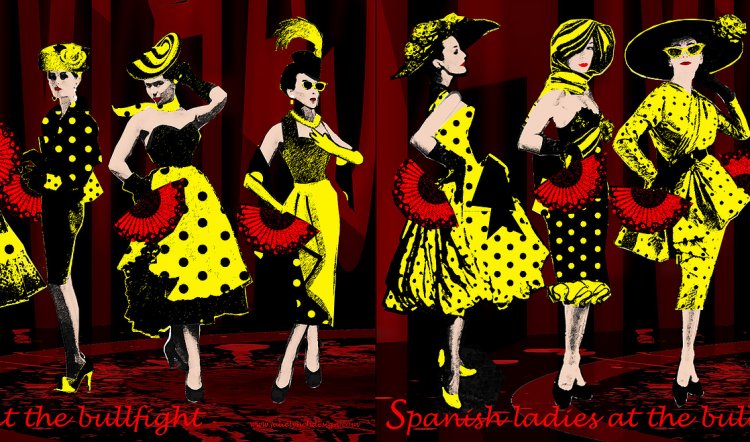
(For more reviews on this point – https://dailyreview.com.au/carmen-review-handa-opera-sydney-harbour-2017/57534/ http://www.stagenoise.com/review/2017/carmen-handa-on-sydney-harbour-2017 http://www.broadwayworld.com/australia-melbourne/article/BWW-REVIEW-Opera-Australias-Revival-Of-Handa-On-Sydney- Harbours-CARMEN-Is-Entertaining-But-Not-True-To-The-Creators-Vision-20170326)
We maintain that the originating artists have the deepest understanding of conceptual and production intention, and therefore should be the first artists consulted and be given “first right of refusal” to be re-engaged on a remount. Julie Lynch attended Opening Night, and came away with dozens of costume notes from dressing clarifications, problems with hair and makeup, colour matching, and body-type issues that should have been addressed for the new principal cast, and would have been easy and inexpensive to do so had OA allowed her involvement.
OA has argued that not including originating directors and designers is common practice for opera all around the world. We maintain that the practice of not allowing leading creatives to supervise revivals is a new policy for the OA, as they acknowledged in correspondence with Lynch’s agent saying that “the company has changed its work practices significantly across the board since 2013”. Nevertheless, as a positive sign some directors are still being allowed to oversee their work, for example: director Neil Armfield AO has recently overseen the Melbourne revival of The Ring Cycle and costume designer Alice Babidge was brought back on board to redesign some of the costumes to better serve the cast changes - exactly the same scenario that Lynch was asking for.
Up until now Brian Thomson has designed fifteen operas for OA, thirteen have been revived of which he has been invited back to oversee eleven, the only two that he has not been invited back to oversee are Carmen (2017) and La Bohème (2012 - 2017), which have been arguably more commercial revivals. It is worth noting that on La Bohème and Carmen, Edwards, Thomson and Lynch do not receive a passive royalty, contrary to standard practice in theatre and musicals, nor does their initial fee compensate for the lack of any ongoing royalty.
OA’s argues that this “is common practice around the globe”, but we think it is more complex than that; revival directors and associate designers exist for a wide range of reasons such as - the leading creatives are unavailable when the production is being remounted, or the director or designer does not want to be involved for personal or professional reasons, not just because the producing company wants to save money. It is a European model that is not necessarily suited to Australia. Nevertheless, why give “the cultural event of the year”, as OA spruiks, to a revival and less experienced director, instead of the internationally acclaimed originating director who is obviously more equipped to bear the important responsibility and was available? OA’s new policy of not necessarily allowing the originating creative teams to oversee revivals undermines all Australian Live Performance artists’ artistic integrity as well as their income.
The Australian Production Design Guild (APDG) provides guidelines for best practice and recommends: “When a repertory company (including opera and ballet) remounts a work (the producing company) will pay the designers of the original production for the ongoing use of their work. [...] In addition, the designer will be given the option to be engaged to supervise the first remount and will be paid a fee for this work as appropriate to the circumstances and the required amount of time.”
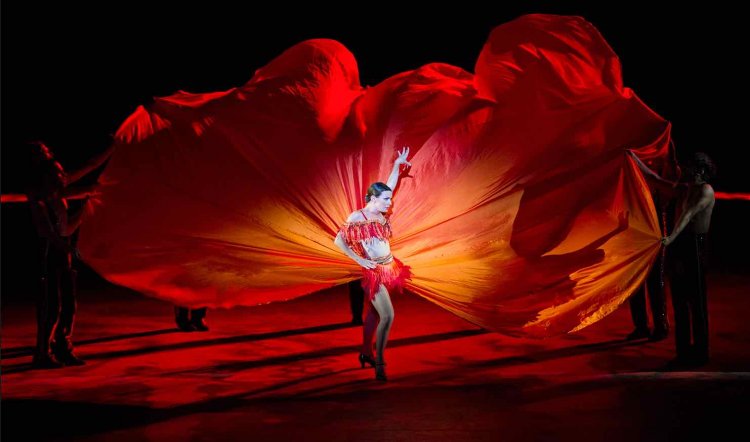
The Australia Council who funds Opera Australia expects:
“...that artists professionally employed or engaged on Australia Council-funded activities will be remunerated for their work. The Australia Council considers the remuneration of artists to be integral to effective budgeting and planning, and requires information on artists’ remuneration to be available within funding applications.
“Pay scales and conditions may be prescribed by legally binding industrial awards and agreements, such as those monitored by the Media, Entertainment and Arts Alliance (MEAA). In other cases, arts industry organisations such as the Australian Writers’ Guild, The Australian Production Design Guild (APDG), the Australian Society of Authors and the National Association for the Visual Arts have recommended appropriate industry standards. Where an industry standard clearly applies, applicants are expected to meet those rates of pay.”
When Lynch’s agent raised the APDG and the Australia Council’s policies on remounts and remuneration, OA responded with, “we negotiate our agreements independently to the Australia Council”. Unlike the situations in North America and Europe, Opera Australia has a disproportionate power in the field of Opera in Australia, leaving many artists in a vulnerable position for fair and open negotiation.
Even though Lynch’s contract for Carmen included the clause that OA “shall be required to approach the Contracting Party to participate in the supervision of the further use of the design” this was described by OA as a “sticky oversight” and was not honoured. After months of Lynch offering her services and consistently being told “she was not required” she eventually accepted a moderate financial compensation (a fixed passive fee, for the first time) for the use of her design, as opposed to being re-engaged to supervise under the original contract, and eventually she gave up. Edwards and Thomson have not been offered any remuneration.”
The images, used here, by the way, are of Dame Margaret Rutherford as Miss Marple; one of Julie Lynch's costume design drawings, and one of her fully realised costumes – the 4m-skirt Flamenco outfit (and dancers)

